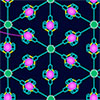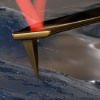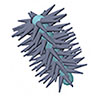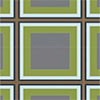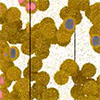Feb 21, 2022 (Nanowerk News) Exploding a photo subject in order to take its picture? An international research team at the European XFEL, the world's largest X-ray laser, applied this “extreme” method to take pictures of complex molecules. The scientists used the ultra-bright X-ray flashes generated by the facility to...
An unexpected discovery could improve the crystallinity of coordination nanosheets
Feb 21, 2022 (Nanowerk News) Coordination nanosheets are a new and emerging class of two-dimensional materials, rapidly gaining importance in the field of nanomaterials. They consist of metal ions and organic ligand molecules, linked to each other to form one framework, via coordination bonds. These nanosheets act as building blocks,...
How sound waves could help regrow bones
Feb 21, 2022 (Nanowerk News) Researchers have used sound waves to turn stem cells into bone cells, in a tissue engineering advance that could one day help patients regrow bone lost to cancer or degenerative disease. The innovative stem cell treatment from researchers at RMIT University offers a smart way...
What role does green electricity play in charging electric cars?
Feb 21, 2022 (Nanowerk News) A new study (PDF) by Fraunhofer ISI addresses the question of how widespread green electricity contracts are among users of electric vehicles in Germany. The study made a detailed examination of the share of green electricity contracts for charging at home, at work, and at...
Thin-film microfluidics device finds novel way to make oil and water attract
Feb 21, 2022 (Nanowerk News) Imagine making some liquids mix that do not mix, then unmixing them. In one of the grand challenges of science, a Flinders University device which previously ‘unboiled’ egg protein is now unravelling the mystery of incompatible fluids; a development that could enhance many future products,...
Meet ELI – a nanotechnology neuroprosthetic that may one day integrate with neurons
Feb 21, 2022 (Nanowerk Spotlight) For over a generation several types of medical neuroprosthetics have been developed, which have improved the lives of thousands of individuals. For instance, cochlear implants have restored functional hearing in individuals with severe hearing impairment. Further advances in motor neuroprosthetics are attempting to restore motor...
Nanosurf announces WaveMode
Feb 20, 2022 (Nanowerk News) Nanosurf announces WaveMode, a new AFM imaging mode launched at the 2022 Biophysical Society meeting. WaveMode is the fastest force curve-based imaging mode with application to all samples and all environments and is available exclusively on the DriveAFM. It represents the first commercially available off-resonance...
Pine needles inspire MOF-based solar steam generation
Feb 20, 2022 (Nanowerk News) Solar steam generation has become a promising renewable energy technology for water harvesting, desalination, and purification, that could benefit people who need it most in remote communities, disaster-relief areas, and developing nations. Solar steam generation turns solar energy into heat, which evaporates water, and the...
World’s smallest battery can power dust-sized computer
Feb 19, 2022 (Nanowerk News) Computers are getting smaller and smaller, just as current cell phones offer computing power similar to that of a laptop. And the trend toward miniaturization continues. Smart dust applications (tiny microelectronic devices), such as biocompatible sensor systems in the body, demand computers and batteries smaller...
Thermoreversible nanocrystal gel for applications in energy, defense and telecommunications
Feb 19, 2022 (Nanowerk News) New applications in energy, defense and telecommunications could receive a boost after a team from The University of Texas at Austin created a new type of “nanocrystal gel” — a gel composed of tiny nanocrystals each 10,000 times smaller than the width of a human...


